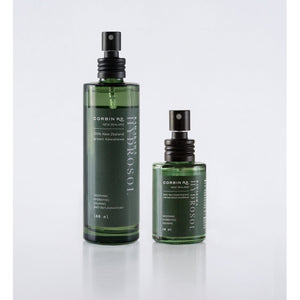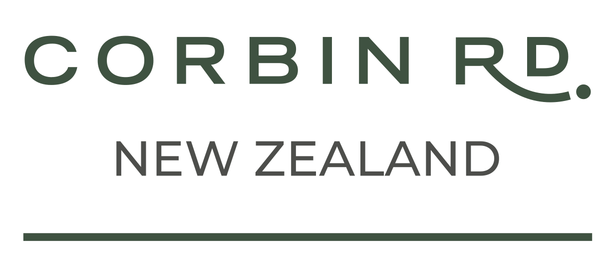Understanding the Three Stages of Menopause: What’s Happening to Your Body and Skin
A Personal Awakening
My eyes were really opened after reading Niki Bezzant’s book This Changes Everything. I mean wow — how did I not know this!!! Since then I’ve eagerly educated myself at every opportunity and revel in events that are now more common thanks to the commitment of our local specialists, such as Dr Samantha Newman here in Hawke’s Bay, who has been tireless in educating us on this subject.
And of course, my favourite podcast is Dr Louise Newson’s, where she has been championing the conversation on menopause for years. Between Bezzant’s honesty, Newman’s practical medical expertise, and Newson’s deep research, I’ve come to see menopause not as a “moment” but a transition that affects every part of our health — including our skin.
Perimenopause: The Transition Phase
What it is:
Perimenopause is the beginning of hormonal change, usually starting in your late 30s or 40s. It can last anywhere from 4–8 years, as your ovaries gradually produce less estrogen and progesterone.
Hormonal changes:
Estrogen fluctuates unpredictably — rising and falling from month to month — which causes many of the classic symptoms.
Common symptoms:
- Irregular or heavy periods
- Hot flashes and night sweats
- Mood swings, anxiety, and fatigue
- Sleep disruption and brain fog
- Skin sensitivity, dryness, or breakouts
How to manage:
Track your cycle to identify patterns.
Support your skin barrier with gentle, hydrating care — try Corbin Rd’s Radiance Boosting Foaming Cleanser and Multivitamin Face Oil for balanced, replenished skin.
Prioritise lifestyle balance: reduce caffeine and alcohol, increase whole foods, and move daily.
Embrace calm: mindfulness, yoga, or breathwork can reduce stress-driven hormonal spikes.
Menopause: The Milestone
What it is:
Menopause officially begins after 12 consecutive months without a period. The average age is around 51, but genetics, lifestyle, and medical history all play a part.
Hormonal changes:
Estrogen, progesterone, and testosterone all stabilise at low levels, influencing energy, mood, metabolism, and skin health.
Common symptoms:
- Persistent hot flashes or night sweats
- Vaginal dryness
- Thinning hair and dry, itchy skin
- Low libido
- Mood fluctuations and poor sleep
How to manage:
Stay hydrated — inside and out: drink water consistently and use barrier-restoring skincare.
Exercise regularly: weight-bearing activity supports bones and mental wellbeing.
Nourish your body: include calcium, vitamin D, and phytoestrogens (from flaxseed, soy, and chickpeas).
Rest well: a regular bedtime and tech-free wind-down routine make a difference.
Postmenopause: The New Normal
What it is:
Postmenopause begins once you’ve gone a year without menstruation and lasts for the rest of your life. Hormone levels stay low and stable, and some symptoms fade while others persist.
Hormonal changes:
Low estrogen affects collagen, bone density, and cardiovascular health. Skin becomes thinner and less able to retain moisture.
Common symptoms:
- Ongoing dryness (skin, eyes, vaginal tissue)
- Reduced elasticity and slower healing
- Possible sleep and mood challenges
How to manage:
Rebuild your skin barrier: use lipid-rich moisturisers and antioxidant oils such as Corbin Rd’s Multivitamin Face Oil.
Keep moving: weight training and resistance exercises maintain bone strength.
Stay proactive: schedule regular heart, bone, and breast health checks.
When to See a Doctor or Specialist
As Nikki Bezant writes in This Changes Everything:
“When women understand what’s happening in their bodies, they can reclaim their power.”
See your GP or a menopause specialist if you are experiencing any of the below and from as early as 30 years and up.
Symptoms disrupt your sleep, mood, or quality of life
You experience heavy or irregular bleeding
You feel overwhelmed, anxious, or depressed
You’re uncertain whether your symptoms are hormonal
Treatment Options and Support Pathways
Managing menopause is not a one-size-fits-all journey. The best plan blends medical, lifestyle, and holistic approaches that align with your body and preferences. You have options — from HRT to natural therapies.
Lifestyle Changes
Eat a nutrient-dense diet rich in antioxidants and healthy fats.
Move daily — strength and cardio both matter.
Limit alcohol, caffeine, and ultra-processed foods.
Prioritise rest, relaxation, and skincare rituals that restore calm and confidence.
Clean, natural skincare can soothe dryness, sensitivity, and inflammation without harsh chemicals — aligning with Corbin Rd’s Less is More for Beautiful Skin philosophy.
Menopause is not the end — it’s a transformation. With knowledge, self-compassion, and the right care, this new phase can bring strength, freedom, and clarity.
How Corbin Rd Supports Menopausal Skin
At Corbin Rd, our Less is More for Beautiful Skin philosophy aligns beautifully with these expert insights. Skin at this stage doesn’t need complication — it needs nourishment, strength, and protection. Our multifunctional, clean formulations support the barrier and help skin feel comfortable and resilient through every stage.
Radiance Boosting finger lime and Pineapple Lactic Foaming Cleanser offers gentle renewal, brightening and smoothing without harsh scrubs.
Gentle Cleansing Balm melts away makeup and impurities while soothing dryness and sensitivity.
5-in-1 SMART Cream - our menopause hero delivers daily hydration, soothing, calming, barrier repair, and pro-aging
Multivitamin Face Oil locks in moisture and replenishes essential lipids, leaving skin supple and supported.
Firming Body Butter nourishes and improves elasticity, addressing dryness and slackness in body skin.
Body Lotion provides everyday hydration for comfort and softness.
Sugar & Salt Body Scrub polishes away dullness, stimulates circulation, and prepares the skin to absorb moisture more effectively.
Together, these create a prevention-focused ritual: gentle cleansing, consistent hydration, supportive actives, and body care that’s as nurturing as your face routine.
References
Brincat, M., Moniz, C., Burden, H., & al. (2013). Estrogens and the skin: Effects on aging and collagen content. Climacteric, 16(3), 37-45. https://pmc.ncbi.nlm.nih.gov/articles/PMC3772914/
Makrantonaki, E., & Zouboulis, C. C. (2007). Skin aging during menopause and the influence of estrogens. Journal of the German Society of Dermatology, 5(5), 389-397. https://pmc.ncbi.nlm.nih.gov/articles/PMC12374573/
Lephart, E. D. (2018). A review of the role of estrogen in skin aging and function. Dermato-Endocrinology, 10(1), e1442160. https://pmc.ncbi.nlm.nih.gov/articles/PMC7859014/
Calabrò, P., & al. (2024). Dermatological changes during menopause and their physiological basis. Cosmetics, 11(1), 9. https://www.mdpi.com/2079-9284/11/1/9
Riggs, B. L., Khosla, S., & Melton, L. J. (2002). Sex steroids and the construction and conservation of the adult skeleton. Endocrine Reviews, 23(3), 279-302. https://pubmed.ncbi.nlm.nih.gov/12050121/
Cauley, J. A., Danielson, M. E., Boudreau, R. M., & al. (2008). Bone mineral density and the menopause transition: The Study of Women’s Health Across the Nation (SWAN). Journal of Clinical Endocrinology & Metabolism, 93(3), 861-868. https://academic.oup.com/jcem/article/93/3/861/2598537
Thurston, R. C., & Joffe, H. (2018). Vasomotor symptoms: Natural history, physiology, and links with health outcomes. Menopause, 25(5), 542-556. https://pmc.ncbi.nlm.nih.gov/articles/PMC5902802/
Mishra, G. D., Anderson, D., Schoenaker, D., & al. (2017). Symptoms of menopause: Global prevalence, physiology, and implications. Nature Reviews Endocrinology, 13(7), 408-420. https://www.nature.com/articles/nrendo.2017.180
Lovejoy, J. C., Champagne, C. M., de Jonge, L., Xie, H., & Smith, S. R. (2008). Increased visceral fat and decreased energy expenditure during the menopause transition. International Journal of Obesity, 32(6), 949-958. https://pubmed.ncbi.nlm.nih.gov/18332882/
Endocrine Society. (2023). Menopause and bone loss. https://www.endocrine.org/patient-engagement/endocrine-library/menopause-and-bone-loss


